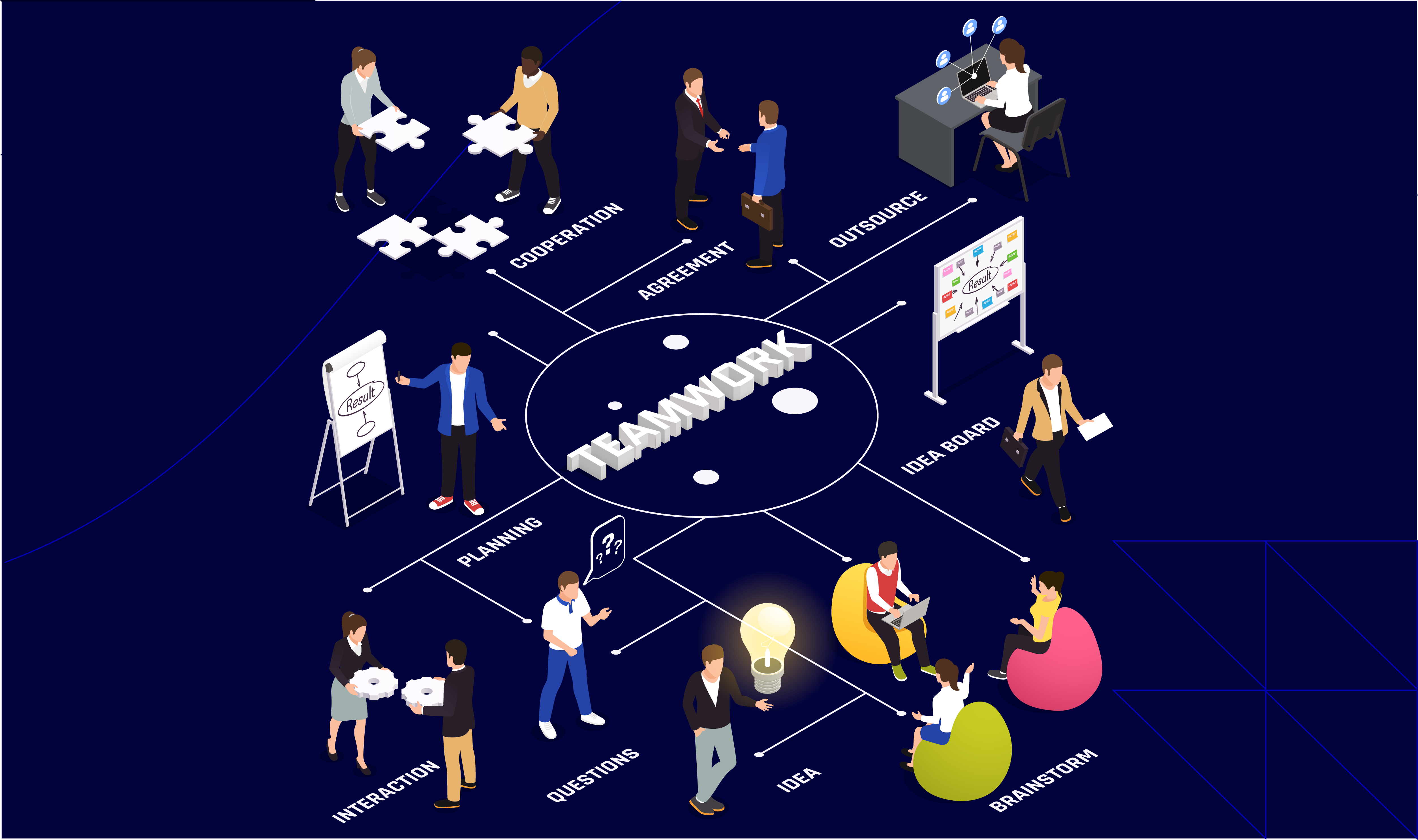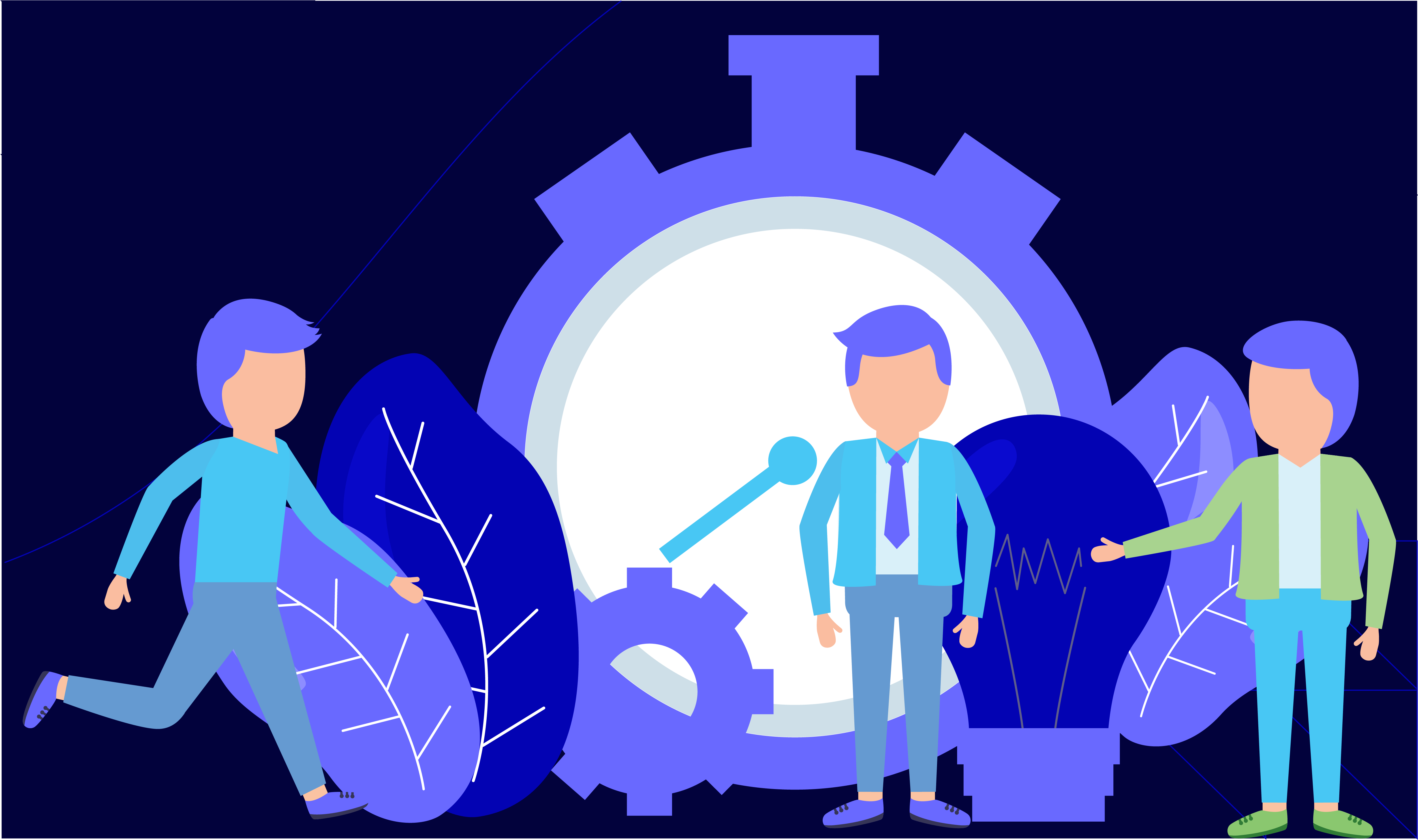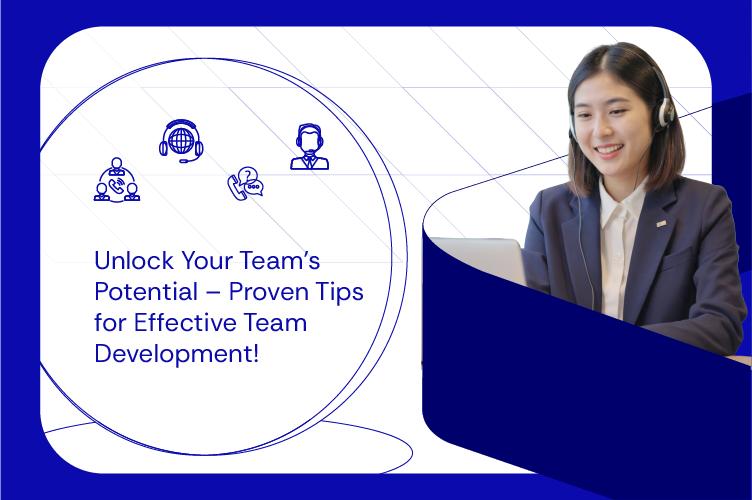Team Development Storming is the second of the five stages in Bruce Tuckman’s team development model. It follows the “forming stage”. During the storming phase, team members challenge each other’s ideas, roles, and authority. It leads to friction or disagreements. By successfully managing this phase, you can set the stage for greater cohesion and productivity in the Norming and Performing phases.
A team is like a puzzle. The picture makes sense only when all the pieces fit.
Building a successful team is more than just about hiring skilled people! That’s because every group starts with excitement, but true results come only when collaboration, trust, and clarity grow.
For CX leaders in consumer brands and D2C companies across the U.S., U.K. & Australia, especially VPs, Senior Managers and Directors managing teams of 5+ employees with $5M+ in revenue, team development is directly tied to business scalability and customer experience success.
But, how to build a strong team in 2025? Is there a defined process to do this? Yes, the theory arrived in 1965 when Bruce Tuckman gave a team development model. This model has 5 phases of team development, which remains especially relevant for CX leaders managing global or distributed teams across the US, UK, and Australia. Each stage explains exactly how a team evolves and what to expect at each step!
So, do you want to build a truly united team in 2025? In this article, let’s study in detail the 5 phases of team development. Also, we will check out group activities you can perform at each stage to boost employee morale and productivity.
Why This Matters for Customer Experience Teams in 2025:
For leaders in customer support and customer experience, strong internal team dynamics aren’t optional as they determine whether your brand delivers consistent service quality, resolves tickets faster and retains loyal customers. Research shows that poorly managed teams lead to a 25% productivity loss, which directly impacts KPIs like AHT (Average Handle Time) and FCR (First Contact Resolution).
What is The Tuckman’s Model of Team Development?

Bruce Tuckman was a psychologist who created a team development model in 1965. His model explains how people in a team start working together. As per his observations:
- Teams do not become strong or productive immediately.
- Instead, they go through five specific stages before reaching a point where they work as a single unit.
He explained the four steps teams go through (including the storming stage of team building). Later, a fifth step was added when the team finishes its work and members move on. These stages are:
- Forming
- Storming (team development storming)
- Norming
- Performing
- Adjourning
Let’s understand these five stages in the next section.
The 5 Phases of Team Development

Did you know? About 86% of employees and executives cite ineffective collaboration and communication as the main cause of workplace failures.
By implementing Tuckman’s team development model in your organisation in 2025, you can create a workforce that:
- Communicates clearly
- Collaborates with purpose
- Delivers consistent results across all stages of project execution
Let’s understand in the detail the 5 stages of team formation:
1. Forming Stage
This is the starting point when a new team comes together. People in the group may not know each other yet. Thus, they are:
- Careful in how they speak and behave
- Not sure what to expect or how they will fit in
Some may be excited about the project, but others may feel nervous and remain quiet. Also, there is little trust and no one is sure how decisions will be made.
Please note that this is a critical time for you as a business owner or team leader. At this stage, your role is to bring structure. You can do so by performing the following tasks:
- Introduce everyone
- Explain the goals of the team clearly
- Define what each person is expected to do
- Set rules for communication and behaviour
- Assign responsibilities
- Show them how meetings will happen and how work will be tracked.
Your aim at this stage is to reduce confusion and make every member feel a part of the common business goal. This stage builds a base for later progress.
For CX leaders, this is where your role is to build clarity around goals, roles and expectations, just as you would set SLA standards for your support teams.
2. Storming Stage
This phase is also known as team development storming. Once people start working together, their real personalities and opinions start to show. In the storming stage of team building, you can expect the following:
- Disagreements begin
- Some team members may try to take control
- A few may resist new ideas or challenge how tasks are assigned
- There may be arguments or divisions within the group
- Productivity may slow down
- People may become frustrated or defensive
Be aware that this is normal. But, you as a business owner, must act quickly! You must try to prevent conflicts from becoming personal. In the storming stage of team building, you must perform the following duties:
- Regularly remind everyone of the common business goal
- Break large tasks into smaller steps to keep the team focused
- Help team members talk through their issues calmly
- Do not take sides
- Create rules so that everyone can speak during meetings without being interrupted
- Listen carefully to what people are saying and guide them toward finding common ground
If your team works through this phase, they will become stronger and more united for future work. Even studies show that teams that communicate smoothly can boost productivity by up to 25%.
CX leaders often face this phase when scaling support operations or onboarding new agents. Setting clear rules and reminding teams of shared KPIs (CSAT, NPS, resolution time) helps keep focus on business outcomes rather than personal differences.
3. Norming Stage
In the norming stage, your team starts working together more smoothly. The disagreements and confusions created in the storming stage of team building, begin to settle. Team members start to understand each other’s:
- Strengths
- Weaknesses
- Work styles
Trust builds, and everyone focuses on the actual work instead of personal differences or team structure. Additionally, people start:
- Helping each other
- Sharing updates without being asked
- Cooperating more during tasks
The team becomes more organised and begins following the rules and systems created in Stage I. As the business owner, your role now is to support this structure.
Perform these tasks:
- Make sure the team feels appreciated for their progress.
- Recognise good work and create small moments to celebrate success.
- Ask the team how things are going
- Be open to suggestions for better ways to work
- Some team members may still have personal challenges, so offer individual help if needed
Your main job in this stage is to maintain team stability and ensure everyone keeps moving forward.
At this stage, customer-facing teams start to mirror the “smooth handoffs” customers expect in omnichannel support. Leaders should reinforce this culture with recognition programs and data-driven feedback.
4. Performing Stage
The performing stage is where your team starts showing strong results. Everyone knows their role and does their part. They start working with minimal supervision. Additionally, in this stage:
- Communication is clear
- Conflicts are rare or managed easily
- The team takes full ownership of the work
- Members share ideas and solve problems together
This phase is completely different from the team development storming stage. Here, you will notice more confidence and better use of everyone’s skills. However, remember that as a leader, you don’t need to control every step!
Let’s see what tasks you can perform in this stage:
- Let the team make decisions when possible (but stay involved by guiding them with clear goals)
- Keep checking in and offer support when asked
- Show that you trust their judgment
- Make sure each person’s contribution is noticed (particularly those who are quiet but consistent).
- Encourage rest and work-life balance so no one gets burnt out.
This stage gives your business the highest output, so maintain motivation and direction without micromanaging.
Here, your customer support or CX team reaches operational maturity through high efficiency, low supervision and clear ownership. To prevent burnout, balance productivity with wellness, ensuring consistent service delivery during peak seasons.
5. Adjourning Stage
The adjourning stage happens when a team finishes its project or work assignment. During this stage, the team:
- Wraps up pending work
- Submits final deliverables
- Completes any necessary reports or handovers
This stage can be mixed with emotions! Team members might feel proud of the results but also sad that the group is splitting up. Some may even feel unsure about what’s next.
Here, as a business owner, your role is to help close things out properly.
You can do so by performing these tasks:
- Thank the team for their effort and results.
- To reduce uncertainty, offer guidance about upcoming opportunities or roles.
- Be available for questions and provide reassurance.
- Make sure all final documentation and responsibilities are completed before the team is disbanded
Always remember that ending strongly builds trust. It sets the tone for future team projects in your business.
In CX, this could reflect closing seasonal support teams or short-term project squads. Ending with clarity and recognition ensures employees remain engaged for future assignments.
Group Activities For Each of The 5 Phases of Team Development

Studies show that about 13% of employees say their productivity improves when they are happy. One way to make employees happier is by regularly organising group activities.
For your reference, below are some popular group activities you can organise for each of the 5 phases of team development:
Stage 1: Forming
In this stage, your team is new. To build comfort and familiarity, perform these activities:
- Introductions
- Each employee should learn each other’s:
- Name
- Each employee should learn each other’s:
- Role in the team
- Let them share two personal facts.
- Each person then introduces their partner to the group.
- This activity breaks the ice and builds trust.
- Client Trivia
-
- Split your team into two groups.
- Ask one group to research the client’s background.
- Ask the other group to study the product.
- Each group prepares a short presentation.
- This activity allows everyone to understand the client and project better.
Stage 2: Storming Stage of Team Building
In this team development storming stage, your team is facing confusion or friction. You can organise these group activities to reduce misunderstandings:
- Use Video Communication
-
- Encourage your team members to resolve disagreements through video calls instead of chat or email.
- By seeing each other’s facial expressions, they can better avoid misinterpretations.
- Track Team Progress Visually
-
- Create a slide deck.
- The deck must show completed tasks such as brand research or campaign drafts.
- This reminds everyone that they are moving forward and working toward a shared goal.
Stage 3: Norming
At this stage, people start understanding each other’s working styles. Collaboration improves as compared to the team development storming phase. To develop natural teamwork, you should perform this activity:
- Virtual Social Meetups
-
- Arrange a casual team session like an:
- Online happy hour
- Arrange a casual team session like an:
- Informal group chat
- This activity builds bonds beyond work discussions and supports friendly communication.
Stage 4: Performing
By now, your team is focused and performing tasks with clarity. They are self-sufficient and need minimal supervision. To maintain motivation, organise these activities:
- Future Vision Board
-
- Ask the team to imagine they have completed the project successfully.
- Now, tell each person to design a board.
- The vision board must show where they see themselves and the team after the campaign.
- Ask Three Questions
-
- Conduct a feedback session where the team answers:
- What is working?
- What isn’t?
- What can we do better?
- This lets you identify areas for improvement.
- Conduct a feedback session where the team answers:
- See What Sticks (Brainstorming Session)
-
- Hold a rapid idea session.
- In this session, everyone shares suggestions for:
- Final campaign efforts
- Future improvements
- This activity keeps creativity flowing and promotes team participation.
Stage 5: Adjourning
As the project ends, it’s time to bring closure. Organise these group activities to show appreciation:
- Review the Vision Board
-
- Revisit the “future vision” boards created earlier.
- Discuss how close the team came to their imagined success.
- This provides a clear picture of what was achieved.
- Group Sharing Session
-
- Set up a final team call.
- Ask each person to share:
- What they learned
- The highs and lows
- How they plan to use their experience in future projects
- Thank-You Notes or Small Celebration
-
- Send a short thank-you message to each member.
- Appreciate their specific role.
- Optionally, hold a small virtual celebration.
- This leaves a positive impression and shows professionalism.
For consumer brands and D2C companies, activities like client trivia, role-play and vision boards can be tailored around real customer scenarios by reinforcing business goals while boosting engagement.
Too Focused on Building Strong Teams? Losing Sight of CX? Let Atidiv Handle Your Customer Support!

Building a strong team isn’t just a goal. It’s a journey! And, you can complete this journey, by following the 5 stages of team formation. Also, try to match the right activities to each stage. These efforts allow you to:
- Build trust
- Reduce friction
- Achieve consistent productivity
Are you looking for a CX specialist? Hire Atidiv! Our expert team combines data-driven precision with human-centric service to boost CX like no other.
- We specialize in omnichannel messaging solutions, live chat, social media and voice support.
- Our 15+ years of expertise and track record with 70+ clients speak for themselves.
- We have delivered up to 60% cost savings, with proven results such as helping a U.S. online tire retailer save $1.3M annually while achieving the #1 customer service ranking. Read case study
By outsourcing CX to Atidiv, you can focus on team development internally while ensuring your customers get the fast, reliable and empathetic support they deserve.
FAQs On Team Development Storming
1. Why does my team struggle to work well together, even after weeks of onboarding?
Team bonding doesn’t happen overnight! According to Tuckman’s model, teams go through the storming stage of team building and norming before delivering strong performances.
Thus, you as a leader should try to guide them through conflicts and build trust among themselves. Also, give them time to grow as a unit!
2. How can I manage team conflicts without taking sides?
You can stay neutral by:
- Setting ground rules for respectful communication
- Promoting calm discussions
- Guiding them toward common solutions instead of picking favourites
These steps build trust and avoid deeper divisions in the team.
3. What if my high-performing team suddenly becomes less productive?
It’s normal for teams to fluctuate. In these situations, you should:
- Revisit project goals
- Try to get feedback
- Assess burnout levels
Remember that sometimes, even top teams need motivation and appreciation to regain focus and performance levels.
Team development isn’t just about employee harmony for CX leaders, it’s about driving customer trust and operational excellence. By following Tuckman’s model and pairing it with expert CX outsourcing from Atidiv, your business can achieve both strong teams and superior customer experiences.

